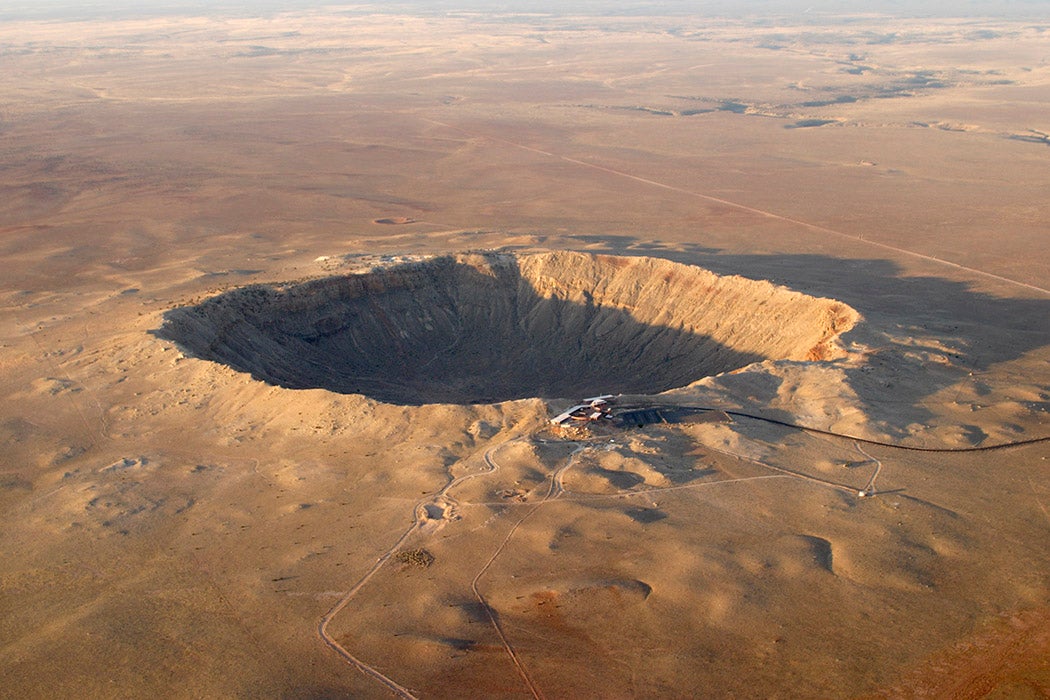Earth experienced its largest asteroid impact around 2 billion years ago, a cataclysmic event that dwarfed the one responsible for wiping out the dinosaurs. Recent studies revisiting the Vredefort crater in South Africa, the colossal impact site, suggest the asteroid was twice as wide as the dino-killer, sparking new insights into Earth’s ancient history.
Situated approximately 75 miles southwest of Johannesburg, the Vredefort crater currently spans 99 miles in diameter, making it Earth’s largest visible crater. Despite its size, erosion over the millennia has reduced its original dimensions from 155 to 174 miles. In comparison, the Chicxulub crater, formed by the dinosaur-killer asteroid, remains larger at 112 miles in diameter.
Previous estimations of the Vredefort crater’s size put it at 107 miles, but a recent study published in the Journal of Geophysical Research: Planets reveals a revised calculation. The Vredefort asteroid likely measured between 12.4 and 15.5 miles across and hurtled towards Earth at speeds ranging from 45,000 to 56,000 mph.
Lead author Natalie Allen emphasizes the critical importance of comprehending Earth’s largest impact structure. This understanding aids in building accurate geological models and refining predictions about other impact craters both on Earth and throughout the solar system.
Over the past 2 billion years, natural erosion has posed challenges in determining the Vredefort crater’s original size. Roger Gibson, a structural geologist, likens the process to slicing the rim off a bowl, gradually decreasing its diameter with each slice.
Recent studies have explored minerals surrounding the Vredefort crater to estimate its original size. These studies identified deformations and shock fractures in crystals, expanding the known radius of the impact and contributing to the confidence in the new size estimate.
The catastrophic impact that wiped out the dinosaurs around 66 million years ago left behind the Chicxulub crater. This asteroid, estimated at 7.5 miles wide, caused immense destruction, including forest fires, acid rain, and a tsunami that reached halfway across the planet.
Based on the revised calculations, the Vredefort asteroid, possibly twice the size of the dinosaur-killer, may have been traveling much faster, potentially making it the single largest energy-release event in Earth’s history.
Unlike the Chicxulub impact, the Vredefort impact, occurring in an era devoid of complex life forms and trees, left no record of mass extinction or forest fires. The absence of evidence poses challenges in understanding the full extent of its ground-shaking power.
Study co-author Miki Nakajima highlights that while the Vredefort impact didn’t leave visible records of mass extinction, it likely affected the global climate more extensively than the Chicxulub impact, showcasing the importance of continued research on the Vredefort crater.
Studying the Vredefort crater remains crucial for gaining insights into Earth’s ancient cataclysmic events. Researchers aim to uncover more about the colossal impact’s repercussions on the global climate and further refine our understanding of Earth’s geological history.
In conclusion, the revelations about the Vredefort asteroid, now believed to be Earth’s largest-ever impactor, provide a fascinating glimpse into the planet’s ancient history. The study’s recalculations offer valuable insights into impact structures, showcasing the dynamic nature of Earth’s geological processes and the significance of understanding our planet’s tumultuous past.





0 Comments